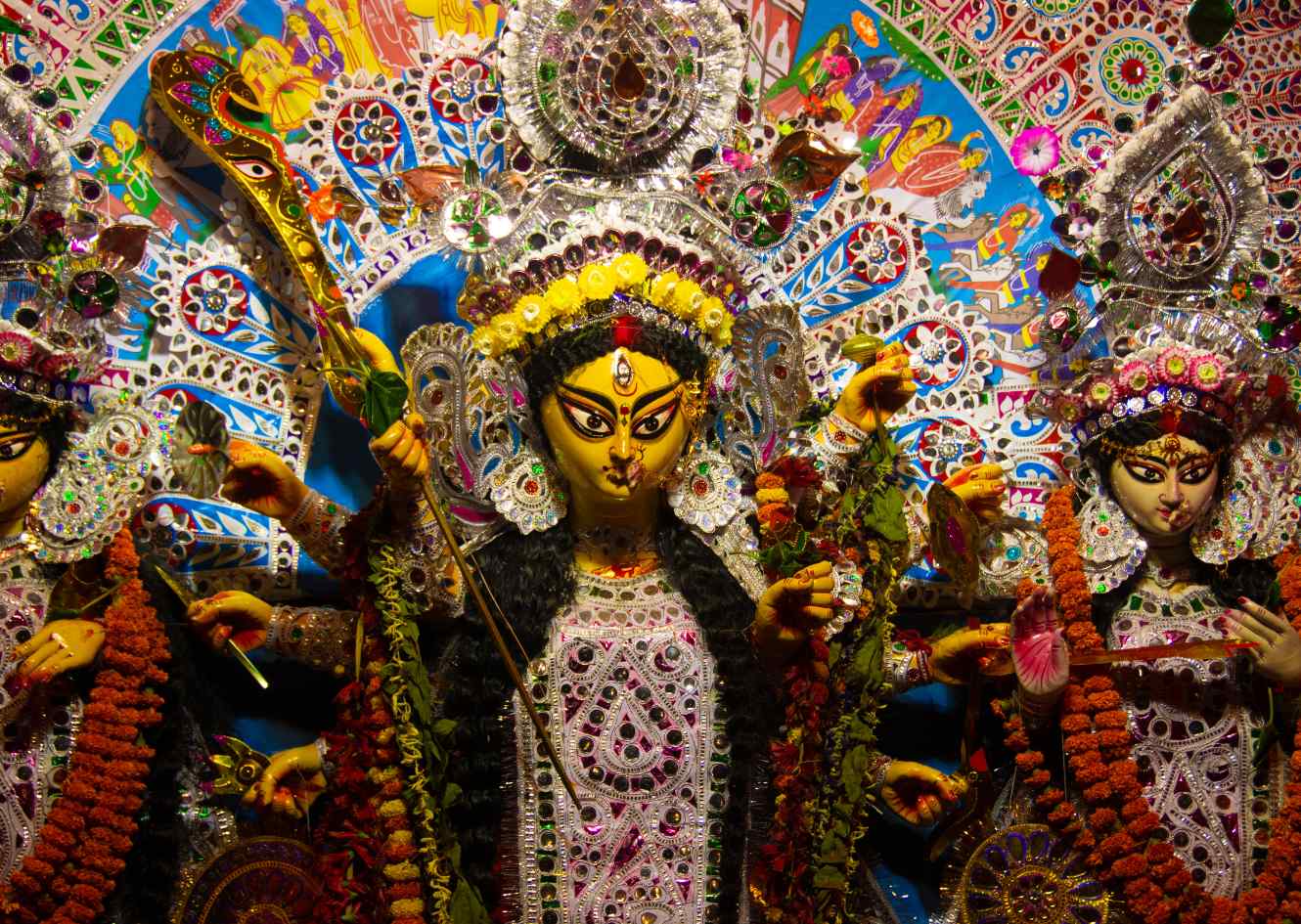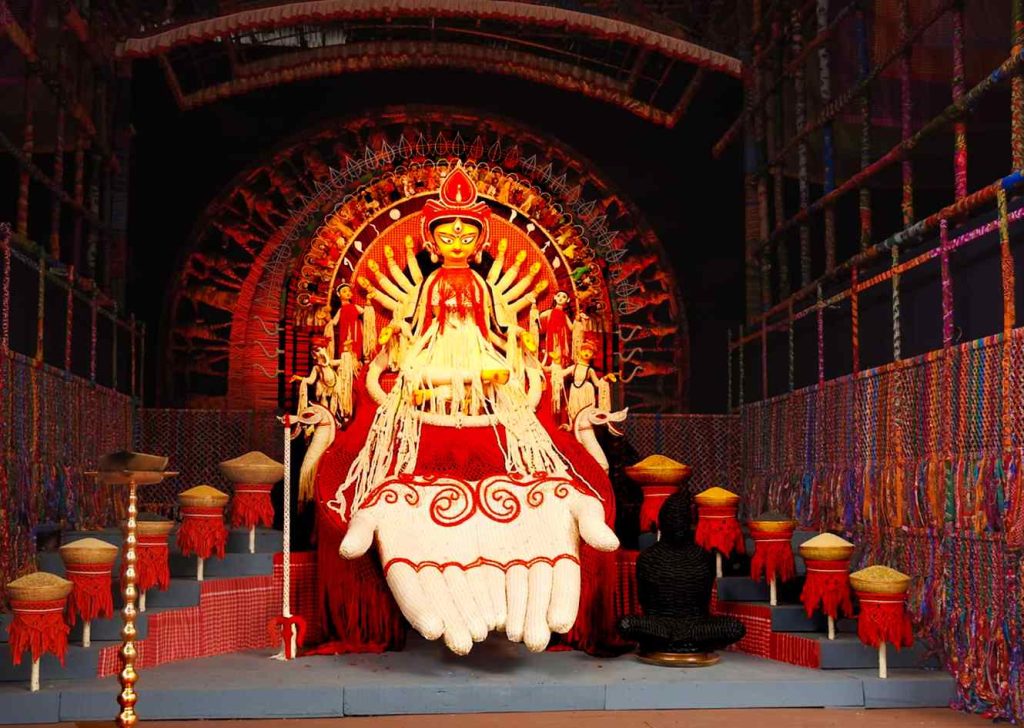Shakti The Divine Feminine Power Within All

Shakti, derived from the Sanskrit word ‘shak’ – ‘to be able’ – represents the primordial cosmic energy and is the personification of divine feminine creative power in Hinduism. She is often referred to as ‘The Great Divine Mother,’ Shakti is seen as the source of all creation, the sustainer of the universe, and the agent of all change. Without her, the cosmos would be static and lifeless. In partnership with Shiva (representing pure consciousness), Shakti is responsible for creation, preservation, and destruction, the continuous cycle of existence.
Manifestations of Shakti
Shakti is depicted in numerous forms, each with unique symbolism and serving a different aspect of life.
Durga, meaning the ‘invincible,’ is one of the fiercest forms of Shakti. She is typically portrayed riding a lion or tiger, with many arms, each carrying a weapon, often defeating the buffalo demon Mahishasura. She symbolizes the protective and destructive aspects of mother nature.
Kali embodies time (Kala) and change. Often depicted with a fearful and fierce demeanor, she symbolizes the power of transformation and liberation from the ego. Parvati, meaning ‘daughter of the mountain,’ is seen as the divine consort of Lord Shiva and represents love, fertility, and devotion. As a mother, she is nurturing and compassionate.
Lakshmi, the Goddess of wealth and prosperity, both material and spiritual, is often worshipped for fortune and success. She is also seen as the embodiment of grace and charm. Saraswati, the Goddess of knowledge, music, arts, wisdom, and learning, represents the free flow of consciousness, wisdom, and insight.

The divine feminine is also represented in other forms, such as Bhumi (Earth), Ganga (the Ganges river), and Annapurna (Goddess of food and nourishment), symbolizing the profound respect for nature and life-giving forces in Hinduism.
Shakti Peethas
Shakti Peethas are significant shrines and pilgrimage destinations in Shaktism, the Goddess-focused Hindu tradition. They are places where the Goddess Shakti is believed to be present and are scattered across the Indian subcontinent. Shakti Peethas are considered highly sacred and associated with a rich tradition of legends and myths about the Goddess.
The origin of Shakti Peethas is connected with the story of Goddess Sati, the first wife of Lord Shiva. As per the myth, Sati self-immolated in her father Daksha’s sacrificial fire, unable to bear the humiliation that her husband, Shiva, suffered in Daksha’s court. Distraught and furious, Shiva carried Sati’s burning body across the universe, performing a cosmic dance of destruction. To calm him down and save the universe, Lord Vishnu used his discus to cut Sati’s body, which fell to earth in 51 pieces. These places where Sati’s body parts fell became known as Shakti Peethas.
Each Shakti Peetha is associated with a specific body part of Sati, and it is believed that the divine energy of the Goddess dwells in these spots. They are considered highly potent places where devotees can experience the divine presence and blessings of the Goddess. Each Shakti Peetha houses a temple dedicated to Shakti (known by various local names) and Lord Bhairava, a manifestation of Lord Shiva.
Prominent Shakti Peethas
Among the 51 Shakti Peethas, some are particularly well-known and visited by numerous devotees annually.
Kamakhya Temple, Assam: This temple, located in Guwahati, is associated with the Yoni (the female reproductive organ), symbolizing the power of procreation. The Kamakhya temple is also an important center for Tantra practices.
Kalighat, West Bengal: Situated in Kolkata, this temple is associated with the right toe of Sati. The temple is dedicated to Kali, the fierce form of Shakti.
Jwalamukhi, Himachal Pradesh: This temple, connected to Sati’s tongue, is unique because there is no idol to worship; instead, the deity is a set of eternal flames.
Shakti Peethas form an essential part of the spiritual and cultural fabric of the Indian subcontinent. They are not only places of worship but also vibrant centers of the ancient Goddess tradition, providing a glimpse into the rich spiritual heritage of Shaktism. Visiting these sites can be a profound spiritual experience, offering devotees an opportunity to connect deeply with the divine feminine power that Shakti embodies.
Importance of The Feminine Power
The divine feminine, or Shakti, plays a significant and multifaceted role in Sanatana Dharma, also known as Hinduism. Sanatana Dharma recognizes and honors the importance of feminine energy as an integral aspect of the cosmos, in contrast to many other religious traditions that often emphasize a predominantly masculine deity.
In Hindu Dharma, Shakti is believed to be the driving force behind all action and existence in the phenomenal cosmos. She is the ultimate source of power, vitality, and substance from which all life originates and into which it eventually dissolves.
Shakti is seen as the power to create and destroy, embodying life’s dynamism and constant flux. She is revered as the source of all forms of energy – physical, mental, and spiritual. Many practices, particularly in the Shakta and Tantra traditions, aim to awaken the Shakti within, often called Kundalini, to achieve spiritual enlightenment. Kundalini Shakti is visualized as a coiled serpent resting at the base of the spine. This energy rises through the spinal channel when awakened through specific practices, leading to profound spiritual experiences and realization.
Shakti, in her various manifestations, plays a significant role in the spiritual practices and philosophies of Sanatana Dharma. As the divine feminine, she brings balance to the cosmos, symbolizing reality’s dynamic and ever-changing aspects. The worship of Shakti is a celebration of energy, power, creativity, and the nurturing aspects of life. The exploration and understanding of Shakti can provide rich insights into the complex and profound philosophy of Hindu cosmology and spiritual practices.
The divine feminine in Sanatana Dharma is not just a concept or an image of worship but a living and vibrant energy that permeates all existence. She symbolizes the dynamic, creative, and nurturing aspects of the cosmos. By honoring and understanding the divine feminine, one can appreciate the interconnectedness of all life forms, the inherent power of creation and transformation, and the balance necessary for the harmonious functioning of the universe. Through the divine feminine, Sanatana Dharma teaches respect for life in all its forms, the pursuit of knowledge and wisdom, and the acceptance of change as an integral part of existence.
